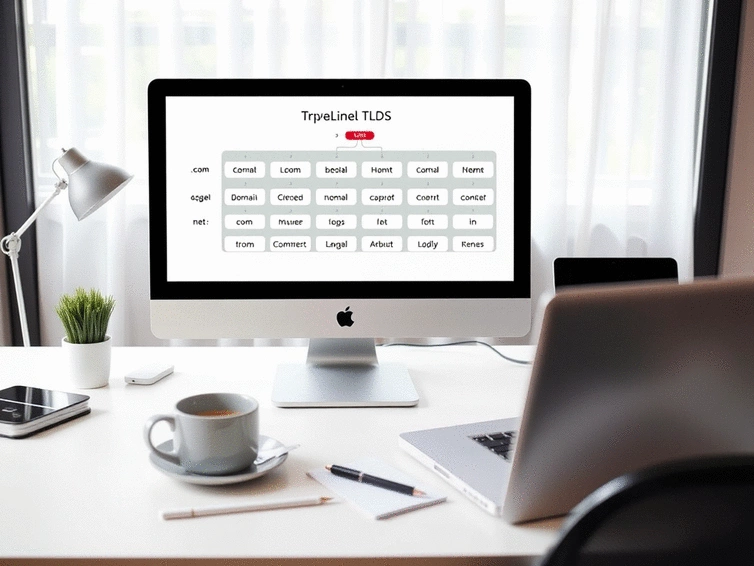Generic TLDs (gTLDs)
Most common, versatile options like .com, .org, and .net. Popular for businesses aiming for broad appeal.
- Broad Appeal
- High Recognition
- Global Reach

As you navigate the digital landscape, understanding the nuances of Top-Level Domains (TLDs) can significantly enhance your online presence. With the right TLD, you not only improve visibility but also build trust with your audience. Are you ready to unlock the potential of your domain strategy?
The choice of a Top-Level Domain (TLD) significantly influences a website's perception and categorization. Below is a visual breakdown of TLD types, their purpose, and their impact.
Most common, versatile options like .com, .org, and .net. Popular for businesses aiming for broad appeal.
Two-letter domains for specific countries, e.g., .uk, .ca. Enhances local relevance and trust.
Specialized domains requiring a sponsor, like .edu for educational institutions. Boosts authority and trustworthiness.
Target specific regions or cities, such as .nyc. Establishes strong local presence.
Supports non-Latin characters, expanding global accessibility. Crucial for reaching diverse linguistic audiences.
In today's digital landscape, understanding Top-Level Domains (TLDs) is crucial for anyone looking to establish an online presence. TLDs are the last segment of a domain name, the part that follows the final dot. For instance, in example.com, “.com” is the TLD. These extensions play a significant role in how websites are perceived and categorized on the internet.
At All for Domains, we recognize that selecting the right TLD can impact not just your website's visibility but also your brand’s credibility and trustworthiness. Let’s delve deeper into the nature of TLDs and their importance in the online realm.
Top-Level Domains are categorized into a few different types that serve various purposes. The Internet Corporation for Assigned Names and Numbers (ICANN) provides comprehensive resources on the different types of TLDs available. Here’s a quick breakdown of their definitions:
Understanding these categories is the first step in choosing the right domain name for your website. Each TLD serves a unique purpose and can help convey your website's focus or target audience.

Top-Level Domains are a critical part of the Domain Name System (DNS), which is essentially the internet's address book. The DNS translates human-readable domain names into IP addresses that computers can understand. TLDs sit at the top of this hierarchy, categorizing websites and helping browsers determine where to direct users when a URL is entered. For a deeper dive into choosing the best TLD, the Internet Society offers valuable insights on selecting a TLD that aligns with your online goals.
For example, when you type in www.yourbusiness.com, the DNS looks up the .com TLD to find the associated IP address, allowing your browser to load the correct website. This seamless process is vital for ensuring that users can easily access your content.
The DNS is not just about translating domain names; it also provides essential functions that support the overall functionality of TLDs. Here are some key points to consider:
As someone who has navigated the complexities of domain registration, I understand how crucial the DNS is in making sure your website runs smoothly. It’s about more than just picking a name; it’s about ensuring that everything functions correctly behind the scenes!
Once we've grasped the importance of TLDs, it's time to explore the different types available. Understanding these options can greatly influence your branding and online strategy.
When selecting a Top-Level Domain (TLD), consider the cultural implications of your chosen extension. For instance, certain TLDs may resonate better with specific demographics or regions. Researching the preferences of your target audience can guide you in picking a TLD that enhances your brand's relatability and appeal.
TLDs (Top-Level Domains) are the last segment of a domain name, such as .com, .org, or .net. They play a crucial role in categorizing websites and influencing how they are perceived online.
The main types include Generic TLDs (gTLDs like .com), Country Code TLDs (ccTLDs like .uk), Sponsored TLDs (sTLDs like .edu), and Geographical TLDs (geoTLDs like .nyc).
The right TLD can significantly enhance your brand's credibility and trustworthiness. For example, sTLDs like .edu or .gov are often associated with high authority, while ccTLDs can build local trust.
The Domain Name System (DNS) translates human-readable domain names (including their TLDs) into IP addresses that computers use to locate websites. TLDs are at the top of the DNS hierarchy, guiding this translation process.
Domain privacy, such as WHOIS privacy protection, is essential to protect your personal contact details from public view, safeguarding you from spam and potential security risks.
As we wrap up our discussion on Top-Level Domains (TLDs), it’s important to recognize the different types and their unique benefits. Each TLD serves a specific purpose, whether you're a business aiming to establish credibility or an individual looking to express your identity online. Understanding these distinctions can significantly impact your online presence.
When selecting a TLD, consider how it aligns with your brand identity and the expectations of your audience. Here's a quick recap of the types of TLDs we've covered:
These TLDs not only define the nature of your website but also shape perceptions about your brand. Choosing wisely can help you connect better with your target audience!

In the journey of establishing your online presence, selecting the right domain extension is a crucial step. At All for Domains, we often remind our users to think strategically about their choice of TLD. Consider your goals: Are you looking to reach a global audience or focus on a specific locality? Do you want a professional image or something more casual?
Ultimately, the right TLD can enhance your brand's visibility and credibility. The New York Times has also highlighted the importance of selecting the right domain name and TLD in today's crowded digital space. Here are some final considerations:
By taking these factors into account, you can make an informed decision that will serve your online goals effectively.
Now that you have a better understanding of TLDs, it’s time to take action! Registering your chosen domain can be a straightforward process if you follow these steps:
Once registered, remember to keep track of renewal dates to maintain your online presence. It’s a simple but crucial step!
If you find the domain registration process overwhelming, don't hesitate to seek help! Engaging with professionals can save you time and ensure you're making the best decisions for your business. Here are some scenarios where expert assistance might be beneficial:
At All for Domains, we're here to empower you through these decisions, so feel free to reach out if you need support!
Finally, as you embark on your domain registration journey, be mindful of domain privacy. Protecting your personal information is essential in today’s digital landscape. Here are some key measures to consider:
By taking these precautions, you safeguard your brand and your peace of mind. Remember, an informed strategy is the best foundation for your online success!
Here is a quick recap of the important points discussed in the article:
Comparing Popular Domain Registrars

Did you know that choosing the right domain registrar can significantly impact your online presence?
Web Hosting Security Checklist Guide

Are you aware that the digital landscape is filled with potential threats that could impact your onl
Understanding Structured Data for SEO

Did you know that implementing structured data can dramatically enhance your website's visibility an
Comparing Popular Domain Registrars
Web Hosting Security Checklist Guide
Understanding Structured Data for SEO
Optimize Images for Better SEO
Free vs. Paid Web Hosting Costs